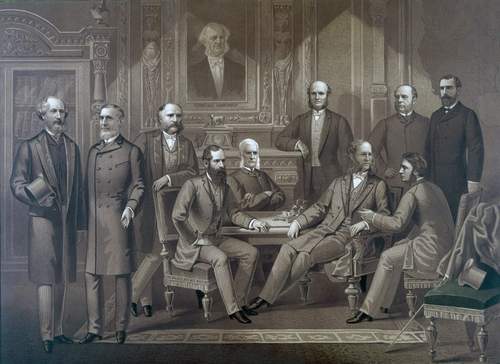I always spend some time on weekends reading about market history. I believe it’s useful, since so many new ideas are really just updates of very old ideas.For example, crypto, to me, is just a collection of old ideas.I know crypto bulls believe they are trading a revolutionary technology. Maybe they are. But I don’t see anything new being done with cryptocurrencies, save for the technology backing them.While cryptocurrency can be used for transactions, so can any traditional currency. Gold is a store of wealth and may sit alongside crypto in hedged portfolios. Stocks and futures can be used for speculation, with lower costs in many cases. Privacy is attained with $100 bills, or even $5s, as readily as with crypto. Electronic recordkeeping is also accomplished by Visa, Mastercard, and even the Federal Reserve.While crypto may one day do all these things better, that seems unlikely. You really can’t have securities used for speculation and everyday transactions at the same time.So, there are issues that need to be understood when considering the potential of cryptocurrencies and history offers perspectives on those ideas. But it’s far from the only example of old ideas that seem new.It’s become clear to me that, yet again, the simple act of history repeating itself is dressing up as a “revolution.”Today, I want to show you how I see through it, and what I think it could imply for world markets moving forward.Another new idea is Robinhood. This is a broker that allows anyone to trade, no matter the skill level.There are no commissions, and entering an order is simple.Let’s ignore whether or not traders unable to navigate the order screens at traditional brokers should even be trading. Some of us remember when Schwab’s online system was new. It was an improvement of the touchtone phone trading that was popular at the time. Before that, you had to talk to someone and say “buy” or “sell.”Looking at that evolution, order entry has always been simple. But Robinhood added confetti, so I’ll give them credit for that innovation.What got me thinking about Robinhood was a cartoon I saw from 1886. It’s an image of Jay Gould sitting inside the ticker tape machine, writing the prices other traders will see and saying “I never speculate.”
Jay Gould was one of the more notorious robber barons of the late 1800s. Sometimes, he relied on what we now call insider trading to create a fortune of more than $70 million at the time of his death in 1892, more than $2 billion in current dollars.Other times, Gould relied on corrupt politicians to earn his fortune. One example of how Gould operated was the crash known as Black Friday in 1869. Gould used his contacts in the White House, including members of President Grant’s family, to try to influence policy. He thought he had inside information on Treasury Department plans and bought as much gold as he could.In the end, Gould’s plan collapsed. Markets around the world plunged. But he made a small profit by double crossing his partners.
While Gould’s life is interesting, that cartoon speaks to today. The image implies that Gould was in the middle of the market. He was pushing prices down before he bought and pushing the price up as he sold. He didn’t speculate because he knew what others would pay before he bought.Of course, regulations implemented in the 20th century took operators like Gould out of the ticker tape machine.Then, innovations like free trading and confetti let Robinhood replace Jay Gould. In some ways, Robinhood is now sitting where Gould sat.Here’s what I mean…
Robinhood Isn’t Breaking Any Rules — Yet
When buying or selling on Robinhood, the algorithm suggests a limit price. This is done by knowing what high frequency trading firms will pay Robinhood for information about your order.Now Robinhood isn’t breaking any rules. I don’t mean to imply that they are, because I’ve already heard enough from their lawyers.By studying history, I know Jay Gould wasn’t breaking any rules either. But somehow, he thought it was advantageous to be involved in setting the prices for trades. Robinhood is in that position now.Eventually regulations will level the playing field. History also shows it will take a financial crisis to trigger new regulations.Jay Gould’s scheming during the 1869 crash caused turmoil in markets around the world. Who knows what could happen with a new figure sitting in the ticker tape machine?Regards,
Chart of the Day:Not Dead, Just Resting
(Click here to view larger image.)
Call it hopium, copium, whatever you like…But I’m not convinced the crypto bull market is over. Simply taking a breather.Yes, the last couple months have been a brutally slow, then brutally fast, drop lower. I might be getting too excited about the first two green weekly candles in a row since November. It could be nothing at all.But when you zoom out, and take a look at the former lows and highs, they all point to this being another bottom before another big push higher.The next few weeks will be critical. We want ETH to sustain this move, and ideally break the recent resistance above $3,100 in order to be confident in this bottom.For those that want to get aggressive now, keep in mind that Bitcoin tends to lead the overall market before altcoins play catch-up.Short-term call options on the ProShares Bitcoin Strategy ETF (BITO) could be a good play here.Regards,
